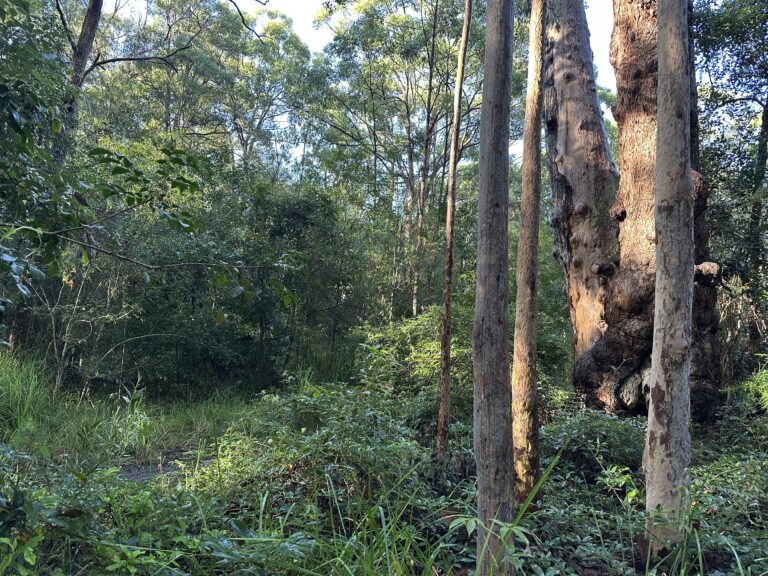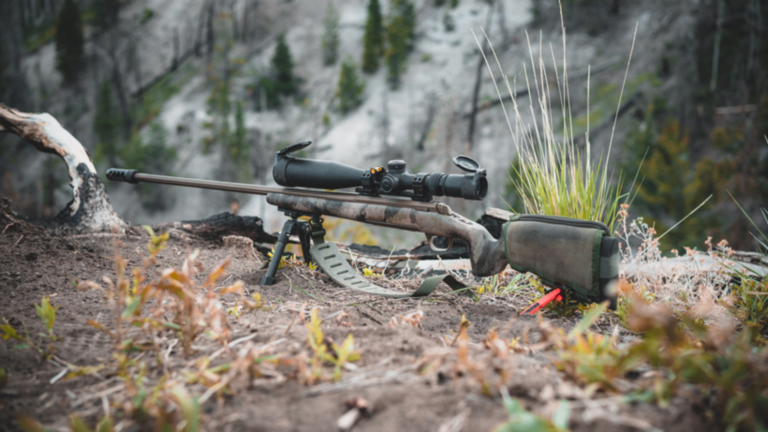Popularised by soccer hooligans, and through their widespread usage in Hollywood action films. Marine flares are undoubtedly the most underrated, and often misused, safety device in a recreational boater’s arsenal.
In this guide, I’ll give you a complete rundown of this essential piece of safety equipment. From the various types of flares available to safe storage and handling requirements, and finally – advice on how to dispose of your expired flares properly.
Let’s get into it.
What is a marine flare?
A marine flare is a visual distress signal that is used to notify nearby aircraft, watercraft, or land-based observers of an emergency. Once activated, the device will emit either a large plume of orange smoke or a bright red beacon of light. This will be dependent upon the type of flare which is chosen. In an ideal scenario, you will activate the flare once a direct line of sight has been established with an observer. Upon witnessing this signal, this observer will then contact emergency services to initiate a rescue attempt, or they will provide direct assistance themselves if situated on a nearby watercraft.
As a marine flare will only remain active for a relatively short period of time, thought should always be given to your situation, and the likelihood that your distress signal will be observed, prior to activation. Even in the most ideal weather conditions, there is no guarantee that your flare will be noticed. So with that in mind, it would be wise to invest in additional safety equipment to increase your chances of survival.
Types of flares
Orange Smoke
A handheld distress signal that is designed to emit a large plume of highly visible orange smoke. The length of time this smoke will remain active may vary between manufacturer and model, however, the average use time will generally range between 40 seconds and 3 minutes.
These flares are highly effective when used during bright daylight hours, with calm and clear weather conditions. Environmental factors such as rain, fog, and wind will drastically reduce the visibility of these devices – in some cases, rendering them completely ineffective. Unlike the other types of flare listed below, an orange smoke flare DOES NOT emit any form of bright light. As such, they are not suited to use at night. These flares have a maximum visual range of approximately 1.4 nautical miles (nmi), or 2.6 km.
Red (handheld) flares
A handheld distress signal which is designed to emit a bright red beacon of light. This type of flare is suited to day and night use, and as a general rule, will have a minimum activation time of 60 seconds. The maximum visible range for a red handheld flare is around 6.5 nmi (12 km) at night, and 3 nmi (5.5 km) during the day. As with all types of flare, environmental factors such as rain and fog may heavily reduce the visibility of these devices.
Red star parachute flares
As with the red handheld flares above, a red star parachute flare is designed to emit a bright red beacon of light. What sets this apart from the latter option, is the added action of this light being fired into the air upon activation. Think of it like a slow-falling firework. These flares are largely kept aboard offshore (or ocean-based) vessels, where this greater height and visibility is required to overcome swell and other environmental factors. Once activated, the ‘star’ (projectile) will burn for a minimum of 40 seconds. The maximum visible range for this type of flare is 10 nmi (18.5 km) when used during the day, and 40 nmi (74 km) at night.
Flare guns
Once a mainstay in offshore vessels and Hollywood blockbusters, flare guns have slowly been phased out over the past few decades in favour of the red star parachute flare. This is largely due to their shorter activation period of only 7 seconds. They do however hold an advantage when it comes to projectile height – achieving a maximum height of around 500 ft (152m) against the lesser 300ft (91m) of the red star parachute.
While it may still be possible to acquire a flare gun in Australia as a collector’s item, it’s unlikely that you’ll be able to find the cartridges to feed it. If you do happen to stumble across one for sale, make sure that you check out your current state regulations before making your purchase – as it may fall under the category of a prohibited weapon due to our country’s questionable ‘appearance’ laws. This more so applies to antique models from WWI and WW2, as opposed to the modern orange plastic models – which don’t seem to be available anywhere in Australia.
In countries where modern flare guns are accessible, they can still be a handy addition to your vessel. The compact size of the cartridges allows for more signal flares to be stored aboard the vessel. Theoretically, this could result in a higher potential to catch the attention of onlookers – as a larger number of signal flares could be deployed. In terms of visibility, I was unable to find any concrete data on modern flare gun projectiles. With that said, it should be comparable to that of a red star parachute flare, as mentioned above.
General requirements
All registered vessels are required to carry two of each type of flare when traveling on open waters. This includes two orange smoke flares and two red handheld flares. If traveling further offshore you will be required to substitute your red handheld flares for a minimum of two red star parachute flares.
Flares should be kept in a sealed waterproof container, in a readily accessible location on your vessel. All persons travelling aboard this vessel should be aware of the location of the flares and must have a basic understanding of each type of flare, and how to ignite them. It is always best to run people through a mock demonstration on dry land, before departing on your journey.
Expiration dates
Most flares will reach their expiry date within 3 years from the listed date of manufacture. The importance of replacing your flares before this date cannot be overstated – as the propellent will gradually deteriorate over time. This may render your flares inert (non-functional), even when stored in the appropriate manner.
Beyond the potential safety risk that an expired flare may pose to yourself, or members of your family, maritime police (and other state agencies) regularly conduct compliance checks of maritime safety equipment. You may be issued with a significant fine if you are found to be in possession of an expired flare.
Signs of deterioration
Expiration dates are not the only way to determine if a flare has passed its useful lifespan. Signs of physical damage or deterioration may also indicate that a flare is no longer fit for use. The presence of moisture is one notable area of concern. This may appear as bubbling of the flare’s outer casing in some paper-coated models, or it may be observed as a small amount of mildew inside the storage container. Either way, it’s likely that some of this moisture would have been absorbed by the explosive propellent which is located inside the flare. This may result in the flare having a dangerous or unreliable source of ignition.
Other forms of physical damage may also produce a similar outcome. This includes dents or deformation of the outer casing. Any flare that is found to have these characteristics should be disposed of immediately in accordance with your local state laws. Your method of handling and storing these flares should also be assessed following proper disposal, as this has likely caused the damage to your flares.
Disposing of expired flares
Due to their flammable nature, flares should always be disposed of in a careful manner. Under no circumstances should they be placed in your household waste bin. Doing so may result in a serious injury to yourself or others. It also has the potential to cause a significant amount of fire damage to your property.
Thankfully, each state has its own FREE process to dispose of expired flares. Check out the information below to find the method which applies to you.
ACT
There are two ways to dispose of expired flares in the ACT. Your first option is to dispose of them at the ACT firearms registry, which is located in Mitchell. Before taking them in, you are required to notify them via telephone, at 5126 9076.
The second option is to hold onto your expired flares until a local collection date has been established as part of the NSW mobile flare collection program. Information relating to this program can be found below.
NSW
As mentioned above, flares are able to be disposed of via the NSW mobile flare collection program. These events occur semi-regularly at boat ramps and other fishing-related locations throughout the state. Keep an eye out on the NSW State Government website for further information relating to this program.
NT
Flare disposal is available at the NT Water Police facility, located at 27 Nebo Road, East Arm. There is no requirement to call beforehand.
QLD
The Queensland Department of Transport provides the general public with free collection bins to dispose of expired flares. These can be found at any of the following locations:
- Volunteer Marine Rescue centres,
- Australian Volunteer Coast Guard centres, and;
- Maritime Safety Queensland.
A list of flare disposal locations can be found on the Maritime Safety Queensland website.
SA
Flares may be handed in at any police station – provided that it is equipped to handle marine pyrotechnics. Contact your local police station to confirm this service is available in your area, before taking them in.
TAS
Marine flares are able to be disposed of at your local municipal waste station. Please discuss the specifics of disposal with the waste station attendant upon arrival.
VIC
The majority of police stations throughout Victoria are able to provide disposal services for expired flares. However, it’s recommended that you contact your local police station first to ensure they have the proper facilities.
Another option worth considering is the “FlareSafe” program which is held by Maritime Safety Victoria. As with similar programs, these events are run on a semi-regular basis and you do not require prior registration in order to attend. For more information on this program, check out the Maritime Safety Victoria website or Facebook page, or call them on 5593 7100.
WA
The general public is able to dispose of up to 10 flares at a time, at any designated Department of Transport office. These locations are listed on the Transport WA website.
Alternatively, flares may also be disposed of at any participating Household Hazardous Waste Program centre. For more information, visit the WasteNet website.
Criminal misuse of flares
Before I wrap this up, it’s worth revisiting a subject that I loosely referenced at the beginning of this guide – the criminal misuse of flares. By now, it’s likely the majority of us have attended a sporting event or a music festival where a flare has been set off in the crowd. To some, it may seem like a bit of harmless fun – the person will get the attention of the band or sports team, the media gives them 10 seconds of cheap fame, and no one gets hurt. Unfortunately, that’s not how this stunt usually plays out…
The reality of the situation is that people often get hurt, the mainstream media will rarely – if ever, report on it, and everyone in the crowd will think the person who set the flare off is a -h̶e̶r̶o̶- dickhead. In terms of punishment, anyone caught misusing a flare will face a maximum sentence of up to 2 years imprisonment. In addition to this, they can expect to receive a large fine, and may also be required to cover the cost of any labour used during the emergency response, and any loss incurred by emergency services while rendering assistance.
That’s a steep price to pay in order to get noticed…
Final thoughts
While marine flares are an invaluable piece of safety equipment, they are definitely not without their shortfalls. Environmental conditions will always be the greatest obstruction to your visibility, and by association – any hope of a successful rescue attempt. That’s why it’s important to invest in additional safety equipment to improve your chances of survival. Marine VHF radios, quality life jackets, and EPIRBs (GPS-enabled emergency beacons) should be your first port of call when fitting out your boat for your next big adventure.
As all seasoned fisho’s know – The weather can turn ugly fast, on open waters. You don’t want to risk being caught unprepared.
One last piece of advice…
These ‘words of wisdom’ don’t just apply to the misuse of flares, but to everything that you do in life –
It’s 2023. Everyone has a camera phone – even your dear old Nana has one. Just because you aren’t silly enough to post a video of something on social media, doesn’t mean that your mates will have the same level of self-restraint. After all, stupidity is quite often what makes a video go ‘viral’.
You should always act like someone else is watching you – because in this day and age, they probably are!
Stay safe and happy boating.
– Luke










